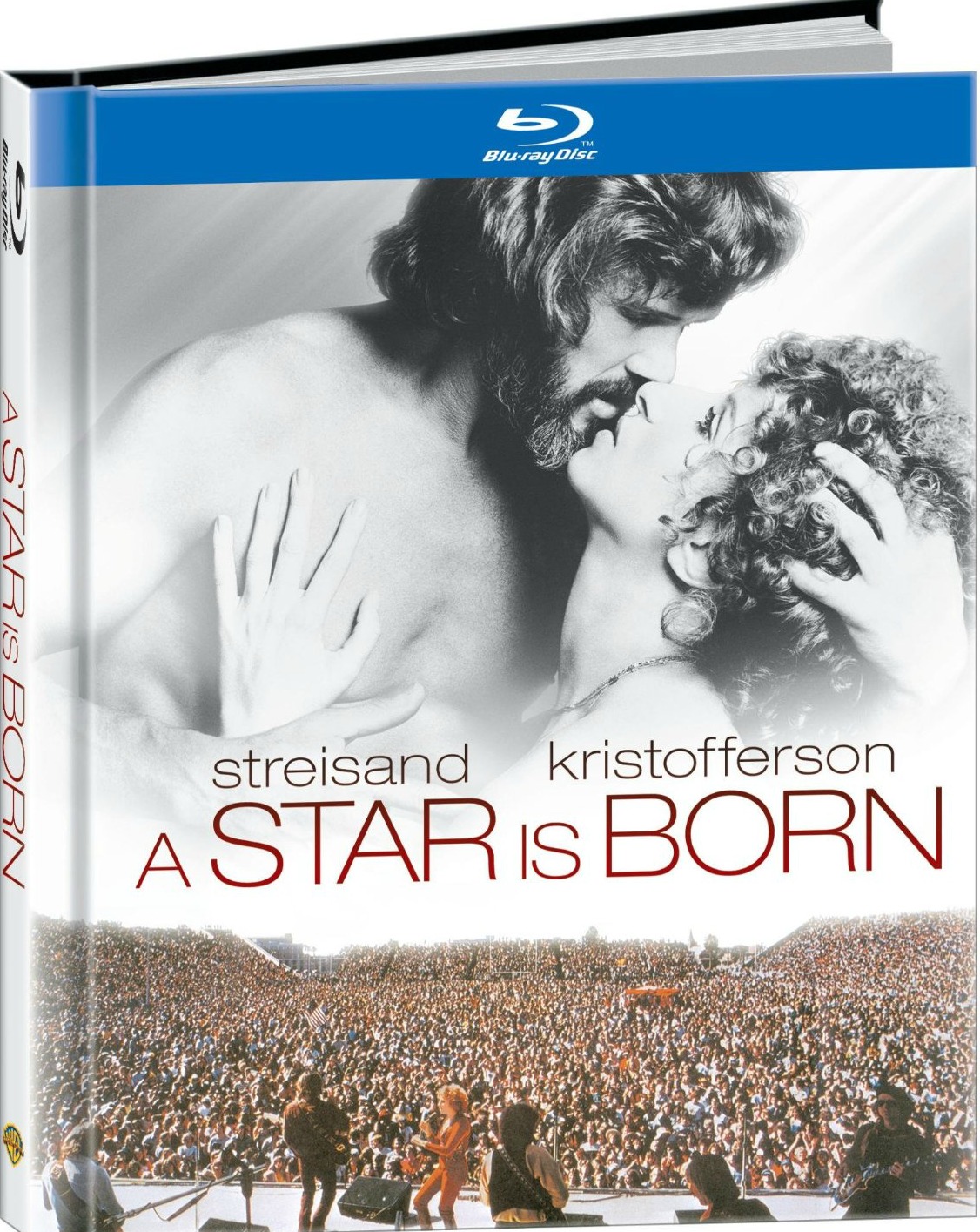The 1976 version of “A Star is Born” (Warner, $27.98) is the best of the trio of films of the same name, the first two made in 1937 and 1954. At least, it is the most relatable to anyone born after the 1955 adaptation.
 Warner Home Video’s first Blu-ray release of the movie starring Barbra Streisand and Kris Kristofferson (as well as notable supporting roles by Gary Busey and an unlikely performance by director Paul Mazursky) is a fitting representation, even a resurrection of the visual quality of the film photographed by the legendary cinematographer Bruce Surtees (“Ben Hur,” “The Graduate,” “The Last Picture Show,” “Summer of 42,” and “The Sting”). Thirty-seven years later, it still holds up and feels relatively contemporary.
Warner Home Video’s first Blu-ray release of the movie starring Barbra Streisand and Kris Kristofferson (as well as notable supporting roles by Gary Busey and an unlikely performance by director Paul Mazursky) is a fitting representation, even a resurrection of the visual quality of the film photographed by the legendary cinematographer Bruce Surtees (“Ben Hur,” “The Graduate,” “The Last Picture Show,” “Summer of 42,” and “The Sting”). Thirty-seven years later, it still holds up and feels relatively contemporary.
Warner has packaged it in one of the studio’s now-familiar book-type cases with a 40-page collection of photos from the movie.
It’s unlikely but it would be nice if the movie found a new audience, as director Frank Pierson masterfully blended disparate elements into a cohesive story featuring remarkably convincing sequences of rock concerts in the 1970s, including indoor and outdoor concerts of “Watch Closely Now” and the Alice Cooper-esque “Hellacious Acres.” Kris Kristofferson also pulls off a surprisingly believable and sometimes even emotional performance as a burned out and alcoholic/drug-addicted rock idol.
Mixed in with these sequences are musical performances by Streisand that are wildly different in tone and style and yet are terrifically engaging. In fact, even Streisand’s songs vary widely from each other, from the whimsical “Queen Bee,” the fun and upbeat “I Believe in Love,” and the Oscar-winning love ballad “Evergreen.”
The common threads tying all this diversity together is director Pierson and co-writer of many of the songs for both artists, Paul Williams.
The new Blu-ray includes many deleted scenes that are interesting – the most fascinating is a sequence showing multiple alternate angles of the climactic song by Streisand that wound up being edited with only one close-up shot — but none deserving of being spared from the editor’s axe.
Streisand refers to several of these outtakes in her feature-length audio commentary, including a scene where she plays a casual acoustic version of “Evergreen” on the guitar for Kristofferson – he comments are mostly noting the scene as the reason her nails on her left hand are trimmed while her nails on her right hand are long.
Streisand’s commentary is also revealing to those not familiar with her intense perfectionism and her relentless focus on every detail, not to mention a controlling and somewhat egotistical personality. At least twice she mentions how she was the first woman to get an Oscar for writing music for “Evergreen.” She also barely acknowledges director Pierson except to say he suggested using stock footage for the outdoor concert until producer Jon Peters (her boyfriend at the time) suggested staging a real concert at Sun Devil stadium in Tempe, Ariz. That is what happened, which led to a very impressive dynamic aerial shot of a camera cresting a hilltop to reveal a massive crowd in the stadium on the other side.
Streisand, an executive producer on the film, describes many shots and settings and other elements as if they were entirely her idea and as if she was the director and as if she even made most of the key editing decisions. Perhaps because she and Pierson had a famously tumultuous working relationship on the film and in tit-for-tat magazine articles afterwards, Streisand also tells listeners at length about how a good director should shoot movies.
But even more noticeable than her ego or her animosity towards Pierson, is how coldly and detached she describes elements of the movie, focusing during intense dramatic scenes on the texture and color of fabric behind the actors or, during the very emotional death scene of Kristofferson’s character, focusing on how she pushed the frustrated sound mixer to use several different versions of her saying “no” because it would play more emotional.
The final indication of Streisand’s lack of emotional connection is her wording of her final comment to sum up the movie. Where others have said things like “It was great fun making this movie” or “I could not have made this movie without the contributions of so many talented people,” all Streisand can muster is: “All in all it was a satisfying work experience.”
— By Scott Hettrick
